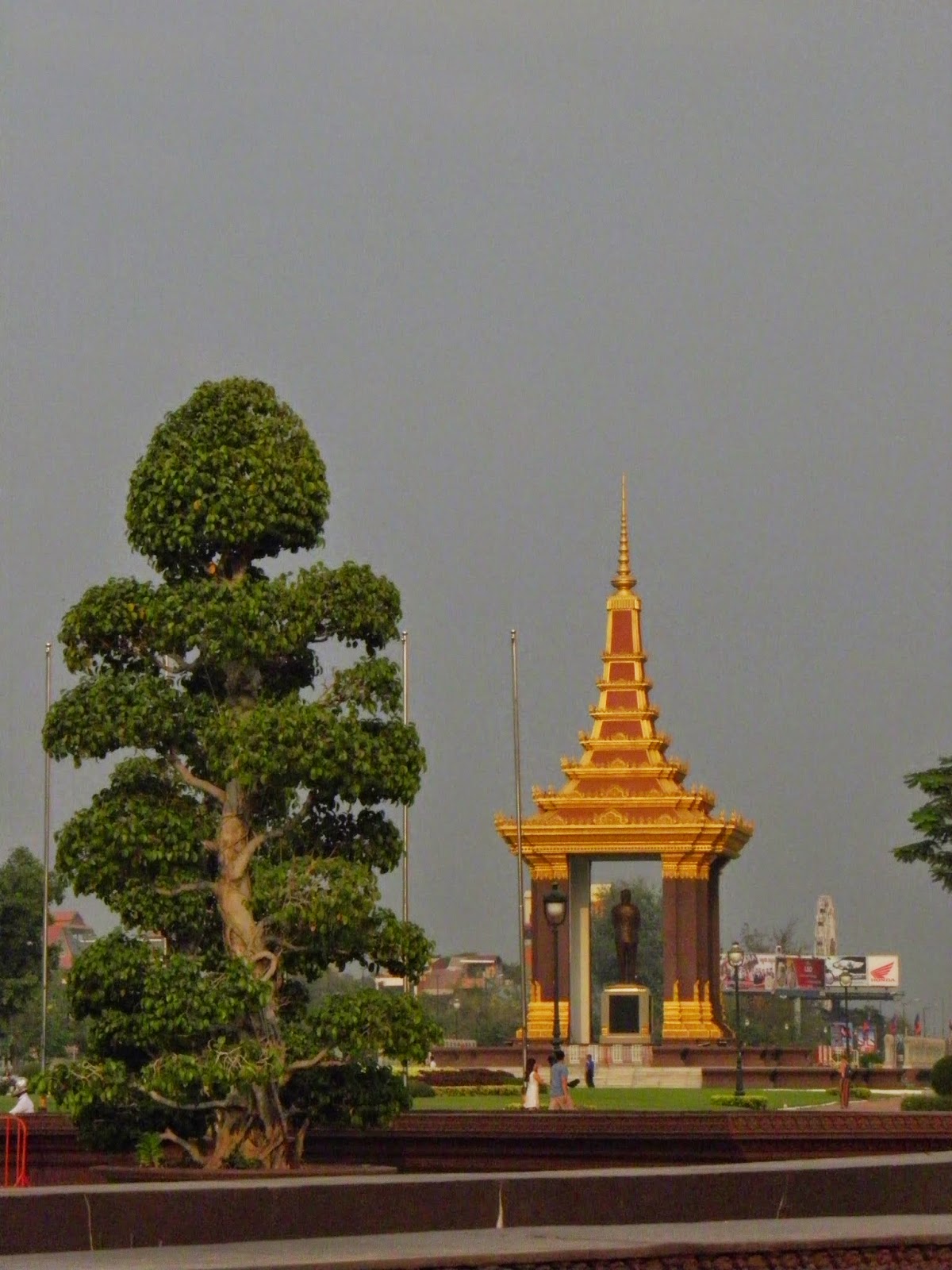*Bell
rings* Students filter into class looking glum. You know what this class is?
You guessed correctly – it’s a history lesson!
As you know,
dear readers, I am in Cambodia to search for former Khmer Rouge cadres who
participated in Southeast Asia’s most prominent genocide. My focus is on the
individual people’s motivations but it is obviously necessary to understand the
context in which these people were acting to be able understand how they
present their actions. And so in this blog I’d like to give a short
introduction – a caveat, that I feel I need to add, is that this is a very
reductionist presentation of the highly complex dynamics which engulfed the
region during the 1970s, but I hope it gives you a good first impression if you
are not familiar with this dark time in Cambodian history. The pictures show you two monuments which are important for this narrative: the independence monument and a statue honouring former King Sihanouk.
After King
Sihanouk had successfully fought for independence for his country from France
in 1953, he subsequently was in more political and ceremonial positions than
Elizabeth Taylor had husbands. He was the political lynchpin for most of
post-independence Cambodia until his death in 2012 and was immensely popular
with the population. So when in 1970 his prime minister Lon Nol toppled him in
a bloodless coup d’état, he only needed to say it once and many of his devote
subjects/citizens joined an obscure revolutionary organisation which promised
to put him back in power. This communist revolutionary group was later known as the Khmer Rouge (a
term first coined in the mid-60s for Cambodian communists) and they capitalised
on Sihanouk’s call and recruited a lot of young people to fight in their ranks.
Also, Lon Nol’s lenient policies towards the USA regarding neighbouring Vietnam
made him deeply unpopular with a population increasingly falling victim to the
over half a million tons of American bombs. The bombs were aimed at Vietcong
who had pulled back behind the Cambodian border (and were supporting the Khmer
Rouge struggles) but countless thousands of people were killed and even more
livelihoods destroyed.
In 1975 the
bitter civil war came to an end when the Khmer Rouge entered Phnom Penh, and a
population weary of the huge death toll of the battles between the rebels and
government forces, tired of American bombing and yearning the return of
Sihanouk welcomed the Khmer Rouge with open arms.
The
euphoria about peace turned quickly when all the cities were brutally
‘evacuated’ by the Khmer Rouge, purportedly to safeguard against American
bombing, but in actual fact in order to pursue their vision of a peasant
revolution going back to the year zero, in which the whole population would
work the land and grow rice and the country could be independent of the imperialist
Western economy. The emptying of the cities was accompanied by violence against
anyone unwilling or unable to leave rapidly, but the fate of the people
subsequently arriving in the villages around the country. Here they were called
‘new people’ (or April 17 people after the date Phnom Penh was taken) and were
treated as second-class people compared with the ‘base’ people who were the
‘true peasants’ and the foundation of the revolution. Even ‘new people’ who had
fled from the civil war to the burgeoning population of Phnom Penh were seen as
former supporters of Lon Nol, putting their trust in him and his troops rather
than in the Khmer Rouge. Sihanouk was not re-instated but put under house
arrest, and several members of the royal family were killed.
The living
conditions under the Khmer Rouge were horrific and minor infractions would
normally mean arrest and re-education for base people, but oftentimes pretty
much immediate death for new people. I’m not going to go into the details of
everyday life in this ‘prison without walls’ under the Khmer Rouge in this
blog, but I will in a blog sometime soon.
The regime
ended 3 years, 8 months and 20 days after the fall of Phnom Penh, when the
Vietnamese (whose friendship the Khmer Rouge had broken off and started
eliminating all Vietnamese in the country and fighting Vietnamese forces)
entered the country on 7 January 1979. The Khmer Rouge pulled back to the
Northwest of the country and continued their fight for a radical communist
regime until well into the 1990s, keeping the country in a continued civil war.
It’s a
complicated history with alliances –secret and open– being formed and breaking
down, political ideas being rolled out, retracted or punished, and a lot of
killing on the battlefield and even more off it.



Keine Kommentare:
Kommentar veröffentlichen